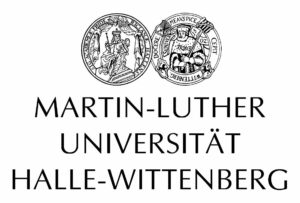Beiner
The interplay of ring-like subunits and long methylene sequences determined structural features, properties, and response to external constraints of various polymeric systems. This applied not only to comblike polymers with a rigid backbone and longer methylene units in the side groups, which were in the focus of our investigations in the funding period from 2015 to 2019, but also to linear precision polymers where longer methylene sequences were interrupted by ring-like defects in the main chain. In both cases, we observed the formation of long-range ordered layered structures characterized by alternating domains containing ring-like subunits and methylene sequences. Similar structures also formed in long-chain polyamides, polyesters, polyurethanes, and hybrid systems with linear architecture containing methylene sequences and strongly interacting amino acid units.
Our hypothesis was that in all these cases, different packing states/polymorphs could be formed since the individual subunits had different native lattices and crystallization ranges. We aimed to study the influence of shear fields and strongly interacting fiber surfaces (such as glass or carbon) in order to understand the structural features and properties of these materials. This knowledge would serve as the basis for a rational optimization of such polymers and related composite materials for special applications.
Following the strategy applied in the funding period from 2015 to 2019 to comb-like polymers with rigid backbones, we investigated the influence of constraints produced by shear fields and fiber surfaces on the structural features of linear precision polymers with ring-like defects and a series of long-chain polyamides, polyesters, or polyurethanes with 12-22 CH2 units and strongly interacting “defects” in the funding period from 2019 to 2023 in project B14. Our goal was to determine whether different polymorphic states and phase transitions could be achieved in such systems under constraints. An intrinsic part of this study was to find efficient ways to orient such polymers by shear, on fiber surfaces, or through a combination of both. This approach aimed to improve the mechanical performance of endless fiber reinforced composites based on such polymers perpendicular to the fiber direction. Our final aim was to understand common features and architecture-dependent differences in long-range ordered polymers with a nanolayered structure. We were particularly interested in the role of the independent packing tendencies of ring-like subunits or strongly interacting defects and methylene sequences in the occurrence of polymorphic states. We also incorporated a few hybrid systems combining methylene sequences and amino acids as defects to determine whether similar mechanisms were important for the occurrence of different packing states (misfolding phenomena) in linear biological systems.
Highlighted Publications:
- V. Danke, S. Reimann, W. Binder, G. Gupta, M. Beiner, Tuning layered superstructures in precision polymers. Sci. Rep. 10, 12119 (2020)
- V. Danke, G. Gupta, S. Reimann, W. H. Binder, and M. Beiner, Structure formation in nanophase-separated systems with lamellar morphology: Comb- like vs. linear precision polymers. Eur. Polym. J. 103, 116 (2018)
- G. Gupta, V. Danke, T. Babur, M. Beiner, Interrelations between side chain and main chain packing in different crystal modifications of alkoxylated polyesters. J. Phys Chem. B 121, 4583-4591 (2017)
Other publications of this group:Rene Sattler, Varun Danke, Mario Beiner,Long Chain Polyamides: Influence of Methylene Sequence Length and External Forces on Structural FeaturesMacromol. Chem ...
Read More






